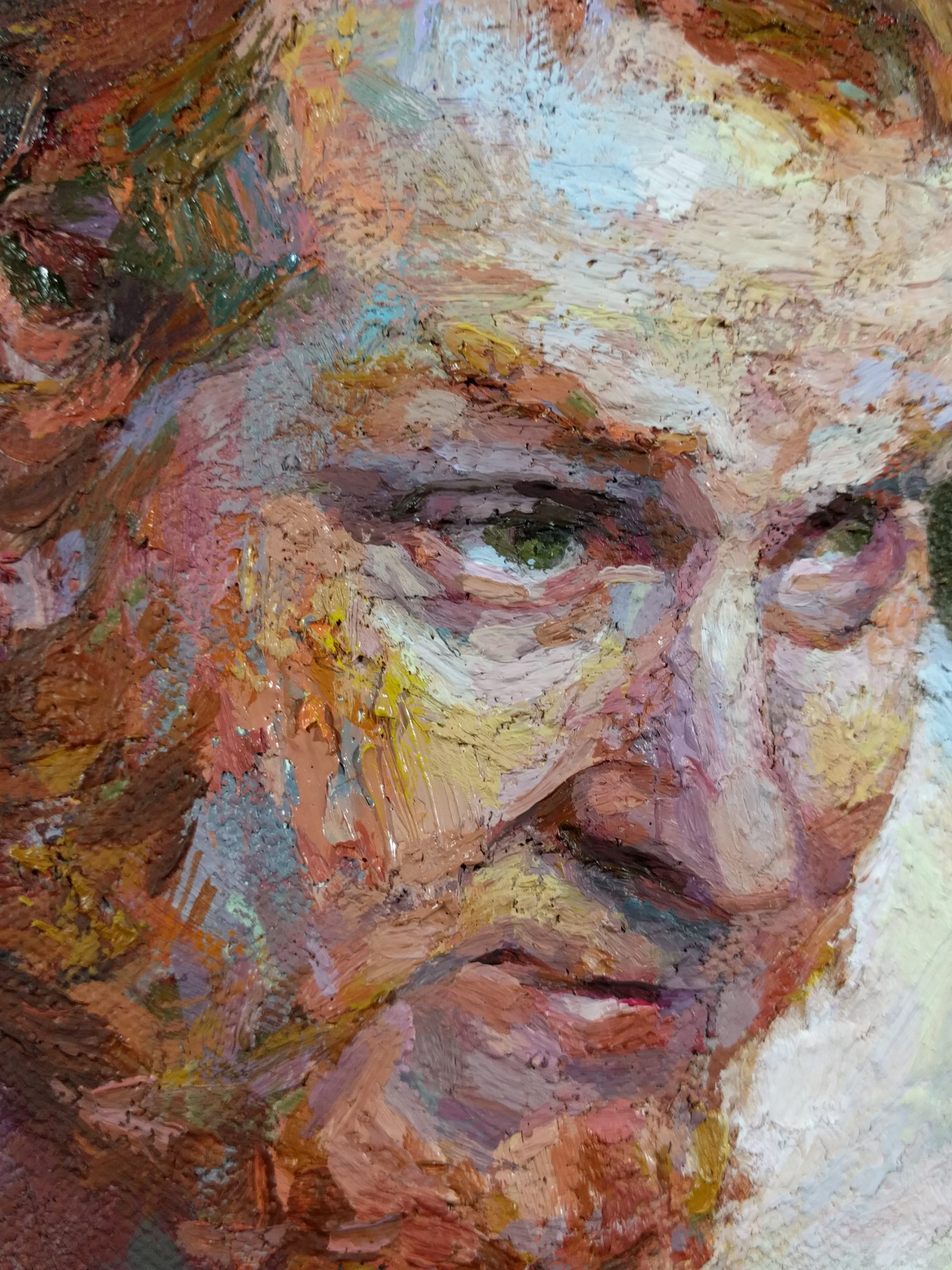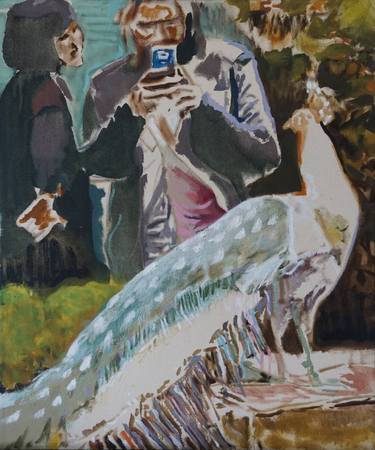The Role of Feeling and Expression in Metaphorical Oil Paint: An Extensive Evaluation of Topic and Composition
The interplay of emotion and expression in metaphorical oil painting offers as an important lens with which one can examine the complex relationship in between subject matter and make-up. Artists harness various techniques, from shade option to brushstroke characteristics, to cultivate emotional vibration within their works.
Understanding Emotion in Art
Emotion in art functions as an effective avenue for expression, permitting musicians to convey intricate sensations with their job. In metaphorical oil painting, this psychological deepness is often represented through the representation of the human figure, capturing the nuances of human experience. The selection of subject issue, color combination, and brushwork all add to the emotional vibration of an item.
Artists frequently attract upon individual experiences, societal issues, or universal themes to evoke feelings in the customer. For example, a portrait may mirror vulnerability, while a vibrant number in activity can represent freedom or chaos. These emotional threads link the audience to the artwork, fostering a dialogue that goes beyond the aesthetic medium.
Moreover, the interplay between light and darkness can enhance emotional strength, assisting the customer's stare and attracting attention to particular elements within the composition. Making use of structure in oil painting additionally adds layers of intricacy, welcoming a tactile reaction that improves the emotional experience. In general, understanding emotion in art is critical for valuing the subtleties that define metaphorical oil painting, as it changes mere depiction right into a profound exploration of the human condition.
Key Aspects of Make-up
In the realm of figurative oil painting, the make-up acts as the underlying framework that arranges visual aspects and enhances the emotional story. Important components of composition include balance, contrast, focal factor, and rhythm, each adding to the total influence of the art work.
Balance refers to the circulation of visual weight within the painting, which can be accomplished through balanced or asymmetrical arrangements. A well-balanced composition offers security, enabling the visitor to involve with the item harmoniously - figurative oil painting. Comparison, on the various other hand, entails juxtaposing different components, such as light and dark or cozy and awesome colors, to assist the viewer's eye and evoke psychological responses
The prime focus is important, as it routes interest to the most considerable part of the paint, often highlighting the psychological core of the story. Through methods like shade saturation or placement, artists can stress this location properly. Rhythm pertains to the repeating of elements, developing a feeling of movement and circulation throughout the structure. By skillfully incorporating these key components, musicians can craft emotionally resonant and engaging figurative oil paints that astound and involve their target market.
Subject and Its Effect
Subject matter plays a critical function in figurative oil painting, as it not only functions as the structure for the narrative but also forms the viewer's analysis and emotional involvement with the art work. The choice of subject-- be it a solitary number, a group dynamic, or a thematic depiction-- straight influences the psychological atmosphere shared to the audience.

For circumstances, pictures frequently stimulate personal links, disclosing the ins and outs of human expression and personality, while scenes illustrating common tasks can produce a feeling of belonging or nostalgia. Furthermore, the historical and social context of the subject enriches the viewer's understanding, prompting deeper representations on societal norms, worths, and the human problem.
Various subject matters additionally produce differing degrees of engagement; a remarkable conflict portrayed through numbers in stress may generate feelings of stress and anxiety or empathy, while tranquil landscapes can conjure up peace and reflection. Inevitably, the impact of topic in figurative oil paint is extensive, as it works as a conduit for psychological vibration, guiding the customer's feedback and analysis, and cultivating a connection in between the viewer and the art work. This interplay is essential for the effective interaction of the artist's intent.
Strategies for Stimulating Sensations
The effectiveness of figurative oil painting in conveying feelings is significantly affected by the techniques used by the artist. Among the most important methods is making use of shade concept, where the calculated choice of colors can stimulate details emotional responses. Cozy shades, such as reds and oranges, usually generate sensations figurative oil painting of interest or aggressiveness, while cooler tones like blues and environment-friendlies tend to evoke peace or sadness.
Another essential method is the control of light and darkness, recognized as chiaroscuro. This technique boosts the three-dimensionality of figures, producing dramatic contrasts that can increase psychological depth. The positioning of light can guide viewers' emotions, highlighting specific elements of the make-up.
Brushwork likewise plays an essential duty; loose, meaningful strokes can communicate energy and spontaneity, whereas smoother strategies may recommend peace or accuracy. The plan of topics within the make-up can affect emotional influence. Close closeness can suggest intimacy, while range might suggest seclusion.
Eventually, the combination of these techniques allows musicians to craft narratives that reverberate with the have a peek here customer, changing a mere visual experience right into an expressive emotional journey. - figurative oil painting

Study of Notable Functions
Checking out remarkable jobs of metaphorical oil painting exposes how different techniques are utilized to evoke powerful feelings. One exemplary case is Edvard Munch's "The Scream," where the altered number and swirling history share existential dread. Munch's use color-- deep blues and vivid oranges-- escalates the psychological impact, showcasing just how scheme choices can shape visitor experience.
An additional significant job is Pablo Picasso's "Les Demoiselles d'Avignon." Here, bold brushstrokes and fragmented types mirror a troubled emotional landscape, challenging traditional representations of the female number. Picasso's ingenious composition not just catches the audience's focus however also invites reflection on motifs of identity and sexuality.
Additionally, Frida Kahlo's "Both Fridas" offers an emotional expedition of duality and self-identity. The different numbers, connected by a common heart, exhibit Kahlo's psychological depth and personal narrative. figurative oil painting. Her meticulous attention to detail and symbolic aspects serve to engage viewers on a natural level
These study emphasize the extensive connection in between emotion and composition in metaphorical oil painting, revealing just how artists harness technique to connect complicated feelings and stories that resonate throughout time and society.

Conclusion
To conclude, the interplay of emotion and expression in figurative oil paint considerably enhances the audience's experience and analysis of the artwork. With a careful choice try here of topic and compositional techniques, musicians share profound narratives that reverberate on both personal and universal levels. The application of color chiaroscuro, brushwork, and theory further intensifies emotional deepness, changing each canvas right into a powerful representation of the complexities of the human experience.
In metaphorical oil painting, this psychological depth is usually portrayed with the representation of the human number, recording the nuances of human experience.Furthermore, the interaction in between light and darkness can amplify emotional intensity, assisting the visitor's gaze and drawing interest to specific components within the composition. The use of structure in oil paint better adds layers of complexity, welcoming a responsive response that enhances the emotional experience.The focal point is vital, as it routes focus to the most substantial component of the paint, often highlighting the emotional core of the narrative. Ultimately, the impact of subject matter in figurative oil painting is profound, as it serves as a channel for emotional resonance, directing the audience's reaction and interpretation, and cultivating a link in between the viewer and the art work.